How to Make a Subway Map with John Tauranac
Hear from an author and map designer who has been creating maps of the NYC subway, officially and unofficially, for over forty years!


At Untapped Cities, we’re bringing back a semi-regular column of explorations outside of New York City shared by our very own writers on their travels around the country and the world. In honor of Cinco de Mayo, our long-time writer Jeff Reuben shares about his favorite Art Deco buildings he discovered in Mexico City.
Ready for a tour of outstanding Art Deco architecture featuring sleek lines, stylized artwork, sensuous curves, and even an earful of jazz? For this retro journey we’re not headed to New York, or even Miami, but further south to Mexico City where a collection of beautiful buildings provide insights into the Mexican capital’s past and present.
Following the Mexican Revolution of the 1910s, during 1920s through 1940s Mexico City was growing and the spirit of the times called for architectural alternatives to historical revival styles. Art Deco fit the bill.
Known for its geometric forms, as represented by Parisian theaters and New York skyscrapers, Art Deco symbolized machine age modernity. But it also incorporated artistic themes from early civilizations, including Mexico’s Aztecs and Mayans. This combination aligned with post-revolutionary aspirations to define Mexico as a progressive nation proud of its pre-Columbian heritage.
There are hundreds of Art Deco buildings in Mexico City, with the greatest concentration in Hipódromo, a neighborhood built on the site of a former horse racetrack. Whether you are planning a trip to Mexico City or just seeking a vicarious thrill, check out these ten treasures we’ve picked from across the city to illustrate the diversity and beauty of Mex Deco.

We start in the Historic Center, an area with buildings dating as far back as the 1500s and ruins that are even older, where architect Manuel Ortiz Monasterio built the 13-story Edificio La Nacional in 1932. It was Mexico City’s first skyscraper and first building engineered to resist earthquakes and Monasterio modeled it on American precedents.
Given its location and high visibility, many criticized it for lacking a traditional Mexican character. However, following the example of Art Deco towers in New York and Chicago, it features ziggurat setbacks at the upper levels, a building form matching the stepped pyramids of the Mexico’s pre-Hispanic civilizations. So, in fact, La Nacional was not so foreign after all.
The building next door, on the right in the photo above, was built about 1949 as an expansion with a matching form. It is known as La Nacional II or Edificio Sears, after its current occupant.
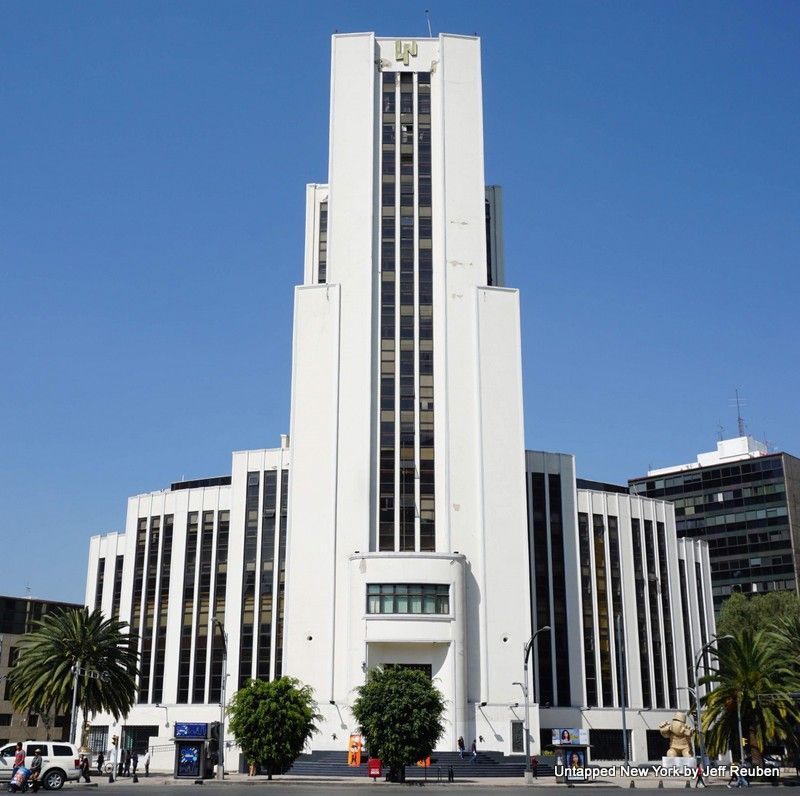
After La Nacional, plans for an even taller Art Deco skyscraper were launched by the National Lottery. Construction started on the 22-story Edificio El Moro in 1934, though it was not completed until 1946. Its design, including further advances in earthquake resistance, is credited to engineer José Antonio Cuevas although some sources indicate Manuel Ortiz Monasterio was also involved.
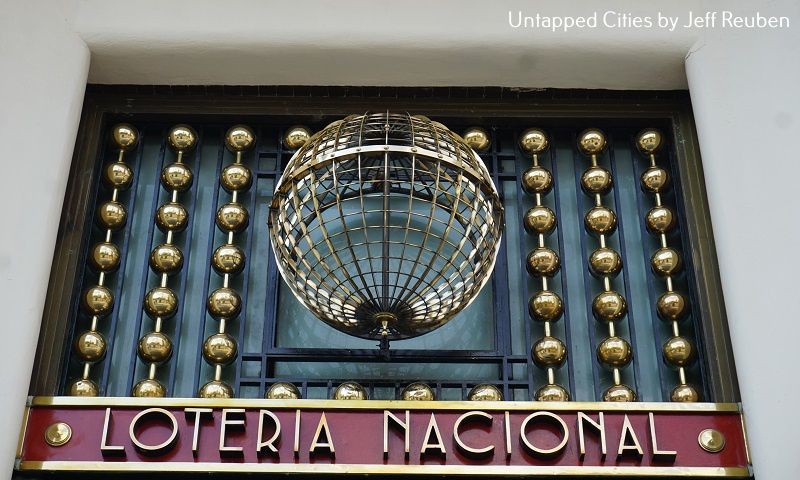
This building is located just outside the Historic Center and stands prominently at the start of Mexico City’s grand boulevard, El Paseo de La Reforma. Exterior restorations in 2011 recaptured the original Art Deco stepped verticality, removing a dark-mirrored facade on the side wings that had been added as an “improvement” in the 1970s.
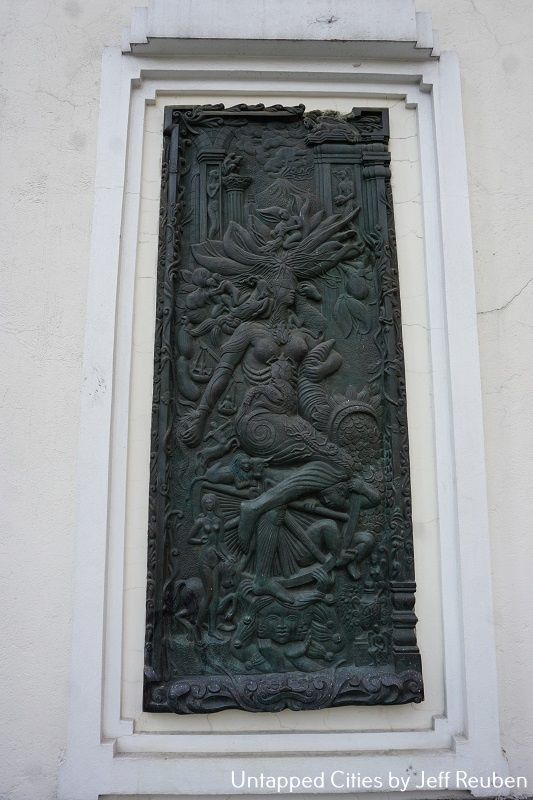
Facade decoration includes a spherical lottery machine and balls sculpture above the entrance. Nearby there are bronze relief panels of Fortuna, the Roman goddess of luck, by artist Federico Cantú. Although they look as if they date from the Deco era, they were added during the 1970s. Currently, the National Lottery is restoring Art Deco interior details and repairing minor damage from the 2017 earthquake.
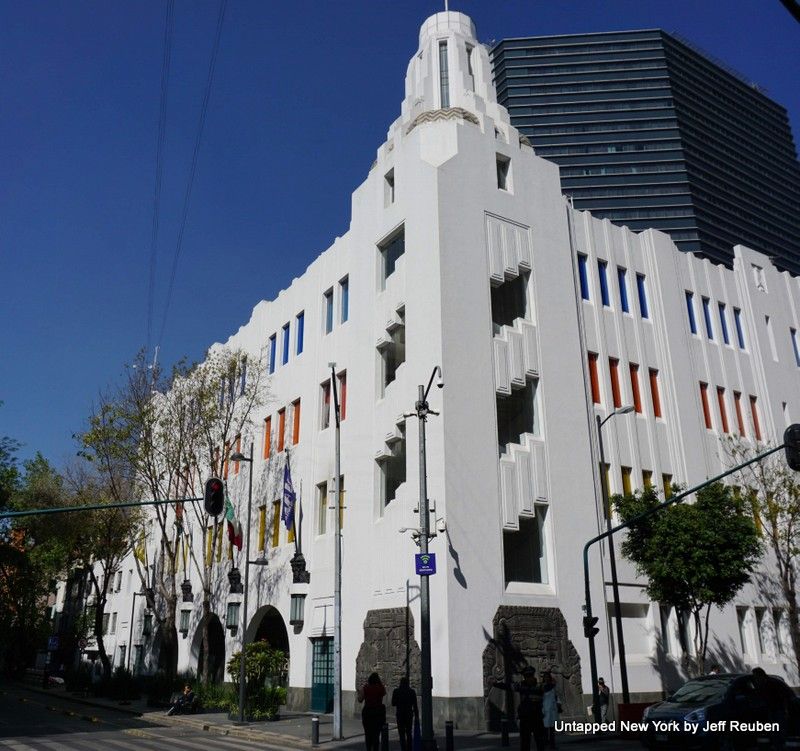
This building, completed as a police and fire station in 1928, integrates a range of Deco elements. The design by Vicente Mendiola and Guillermo Zárraga deftly uses a zig zag window pattern and geometric lines on the facades, corner tower, and interior courtyard to create a sense of movement and energy.
Near the corner there are two large lava rock reliefs with pre-Hispanic themes by sculptor Manuel Centurión. While “Mayan Revival” in American Art Deco was often kitschy or espapist, in the Mexican context such works fit into a cultural movement that celebrated the country’s indigenous origins. The reliefs on this building are inspired by depictions of Tlaloc, the Aztec rain god, found in a number of archaeological sites.

The building was damaged in the 1985 earthquake and left vacant for a number of years. It found new life when it was converted into the Museo de Arte Popular, which opened in 2006. Its Art Deco bones were preserved though re-imagined for its new use, allowing public access to this architectural treasure with artwork inside and out.
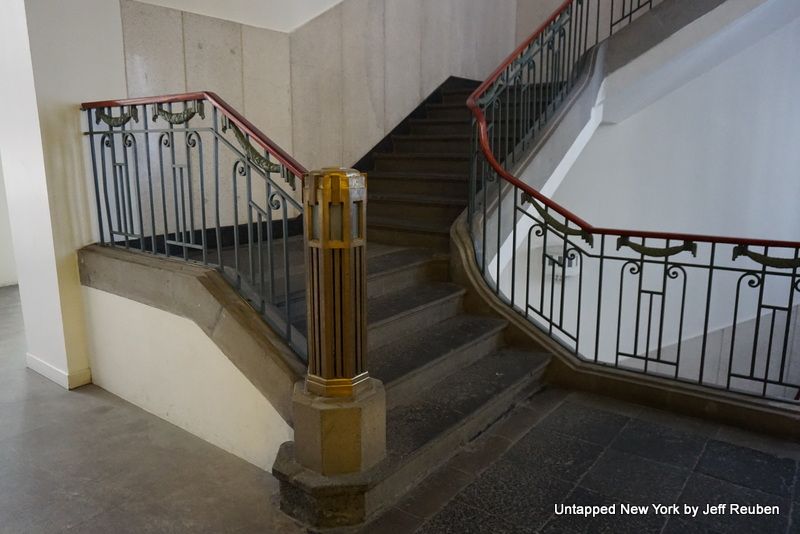
Not all Art Deco buildings in Mexico City have been so fortunate. Over the years many have been demolished and others, including an old movie palace, remain abandoned with uncertain fates.

Art Deco on the inside…
Imagine a building with the civic importance of the New York Public Library, Carnegie Hall, and Chrysler Building all rolled up into one. That will give you a sense of where the Palacio de Bellas Artes (Fine Arts Palace) lies in the soul of Mexico City. It is the city’s leading cultural venue, iconic symbol, and twentieth century architectural masterpiece, containing theaters, museums, and public galleries with murals.

Construction began in 1904 with an Art Nouveau exterior by Italian architect Adamo Boari, but it was not completed until 1934 due to the Mexican Revolution and other obstacles. The interior has an Art Deco design by Mexican architect Federico Mariscal with exquisite detailing, including pre-Columbian inspired works.

…Art Nouveau on the outside
Bellas Artes is also home to “Man, Controller of the Universe,” a 1934 mural by Diego Rivera. This tourist favorite is the re-creation of “Man at the Crossroads,” which was originally commissioned for another Art Deco landmark, Rockefeller Center, but was destroyed due to its communist content.
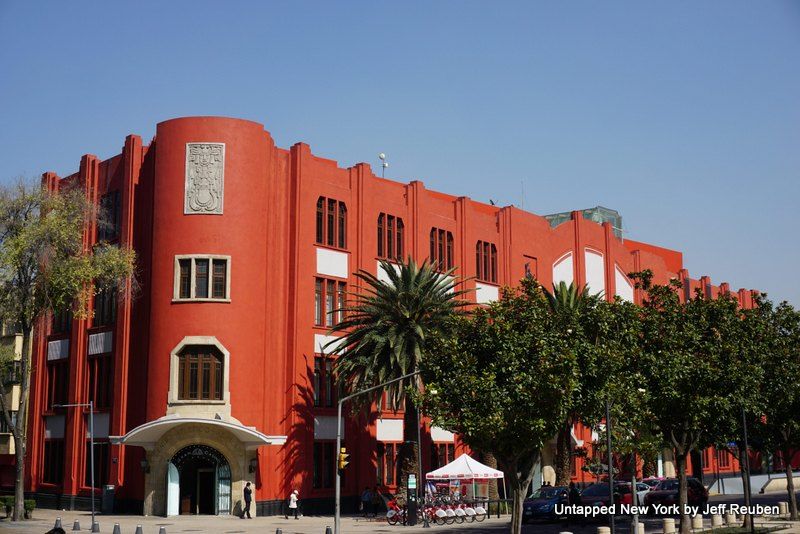
Part of the appeal of Art Deco is its versatility — it’s as attractive for horizontal structures as it is for skyscrapers. A good illustration of this is Frontón México, a sports arena opened in 1929 primarily as a venue for Jai alai. The facade features vertical projections, recesses, and fenestration that provide visual texture to the long street wall. It also has reliefs with pre-Hispanic themes, located above the two main corner entrances.

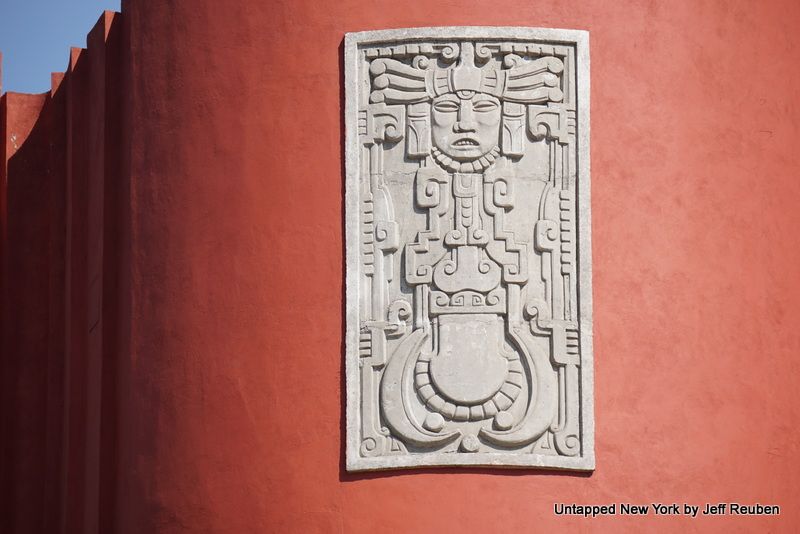
A society hotspot in its early years, Frontón México reopened in 2017 after being abandoned for 21 years and is now a casino and events center hosting various activities, including Jai alai. It is the best known building of architect Joaquín Capilla, but he is mainly remembered for another sports legacy. His son and namesake was a diver and Mexico’s only four-time Olympic medalist.

Turning to residential buildings, the 14-story Edificio Basurto by engineer-architect Francisco J. Serrano is a triumph of proportion. Completed in 1945, it gracefully blends vertical lines and horizontal curves. With its striking aesthetics, including a vaulted vestibule, it often used for on-location filming, including the movie Amores Perros.
This is a relatively late Art Deco building for Mexico City. Within a few years Functionalist architecture, which had already been present there, would predominate as Art Deco faded away. Edificio Basurto manages to integrate a restrained Art Deco approach with Bauhaus elements and in this respect can be considered a hybrid or transitional work.
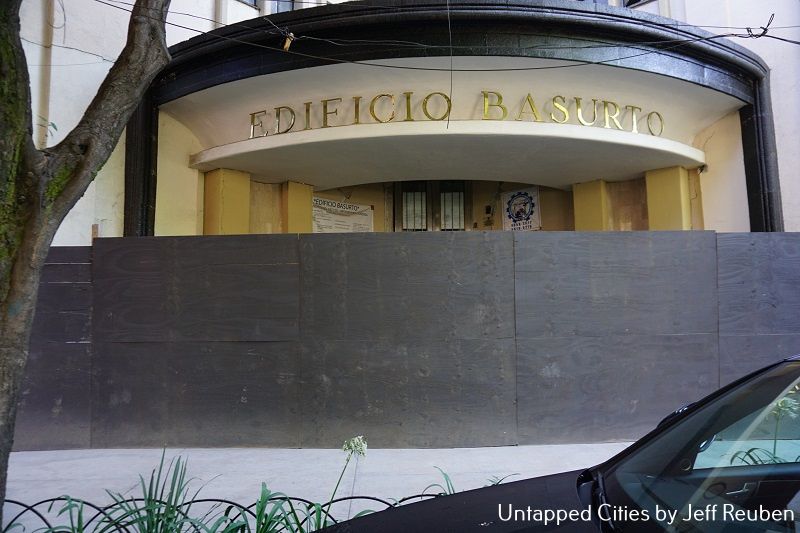
Earthquake repairs (2019)
Located in the Hipódromo neighborhood, a seismically vulnerable area, it sustained significant damage during the 1985 and 2017 earthquakes. When we visited earlier this year, it was undergoing repairs projected to be completed this year.
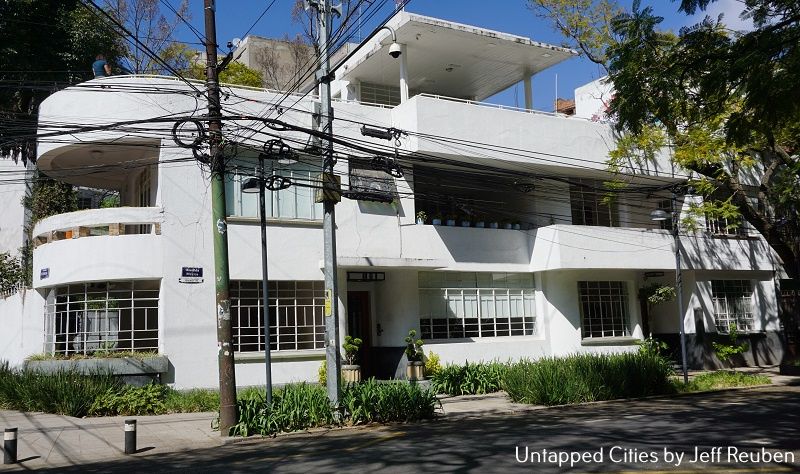
With its rounded corners and smooth monochrome surfaces this 1934 building, another work of Francisco J. Serrano, is an example of Streamline Moderne, an Art Deco offshoot that originated in the United States. Also located in Hipódromo, those aerodynamic curves feel right at home here, as it is located along the oval shaped Avenida Méxcio, which encloses Parque México and follows the course of the old racetrack the area is named after.

Teatro Coronel Lindbergh
Parque México is not only surrounded by Art Deco buildings, it also contains a number of Art Deco structures. These include an open-air theater that was named for Charles Lindbergh in 1928 as a gesture of friendship to the United States after Lucky Lindy visited the year before.
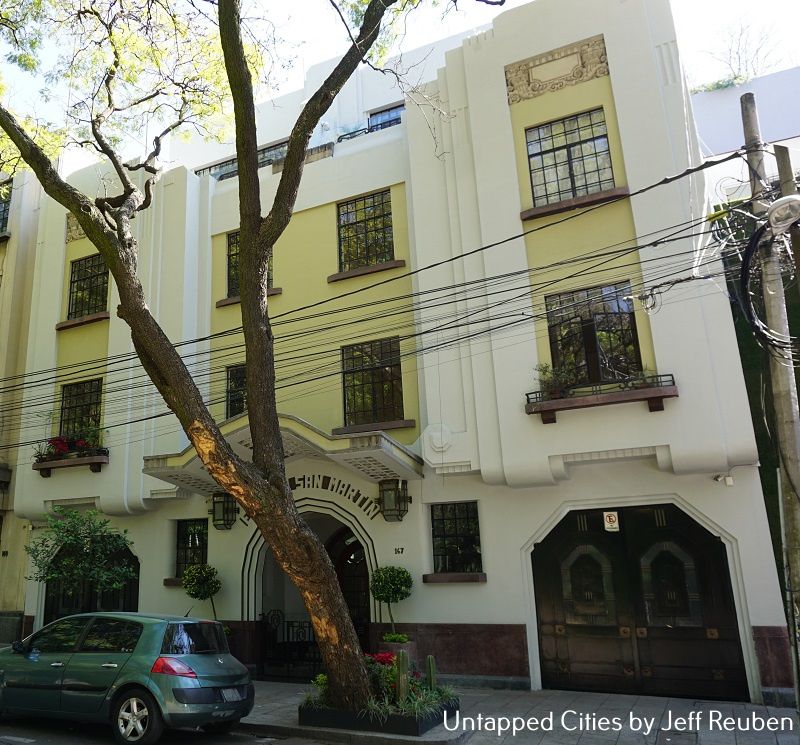
Edificio San Martín was completed in 1931 by architect Ernesto Ignacio Buenrostro and is one of several he designed in Hipódromo. This three-story apartment building includes an angled marquee with small skylights, geometric lamps flanking the entrance and vegetable reliefs above the top floor windows. If faces directly onto Parque México, which is also known as Parque San Martín.
This is yet another Art Deco gem that had to be rescued from the brink. During the late 1990s it was restored following more than 20 years of abandonment and some sources state it was nearly in ruins. Ground floor apartment space was converted to create new garages and the penthouses were enlarged, but its geometric arch entrance looks very similar to the original condition shown in a historic photo which you can see here.
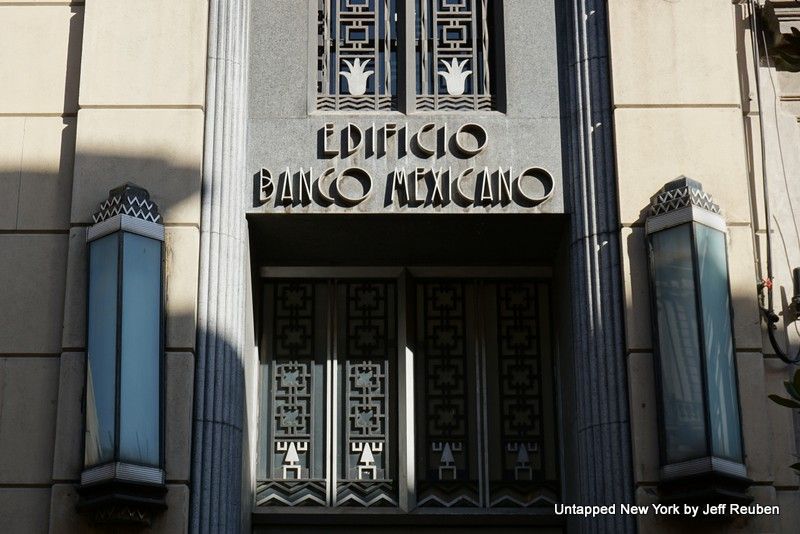
After a day of exploring Mex Deco, what better way to relax than with a Manhattan or a mezcal in a New York-inspired jazz club in the basement of a classic 1930s Art Deco building?
Zinco Jazz Club has been operating in Edificio Banco Mexicano since 2005 in a space that includes former bank vaults. The club’s name is both an homage to the West Village’s Zinc Bar and a play on words as the building is at the corner of Cinco de Mayo Avenue and Zinco is a near-homonym for síncopa (syncopation).
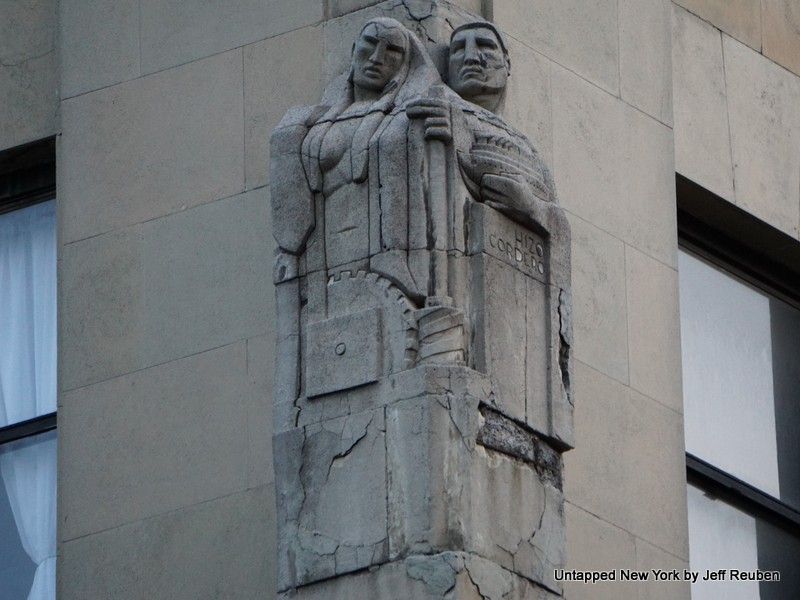
The building dates from 1936 and originally was used by as offices by Banco Mexicano and other companies. Besides Zinco and a ground level gym in the former banking hall, it is now an upscale apartment building.
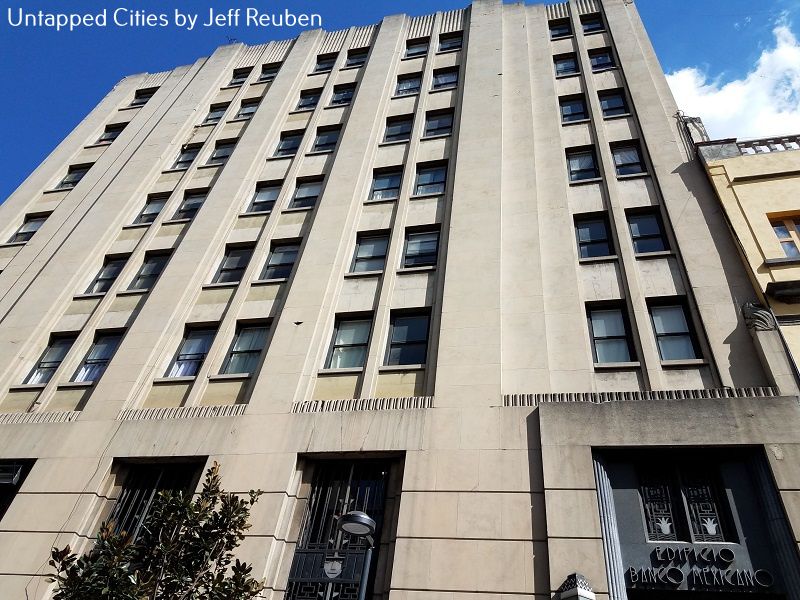
Located in the Historic Center a few blocks from La Nacional, its massing is reminiscent of New York Deco with a vertical, three-dimensional facade, but the details are pure Mex Deco — statues and metalwork with pre-Columbian themes.

Our tour ends at the Hotel Roosevelt, which dates from 1938. Although it has been altered over the years, it features a distinctive Art Deco facade.
It is located on the edge of Hipódromo a short walk from the Art Deco heart of Mexico City. What better way to fully soak up the experience than a stay here?
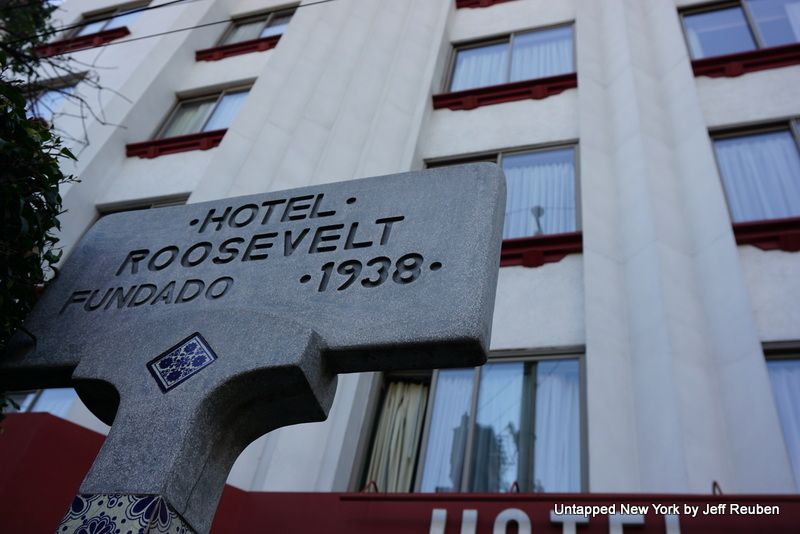
Next, read about the Frida Kahlo exhibition at the Brooklyn Museum, top 10 stunning Art Deco buildings of NYC, and Art Deco’s Mayan Revival.
Contact the author @Jeff_Reuben
Subscribe to our newsletter